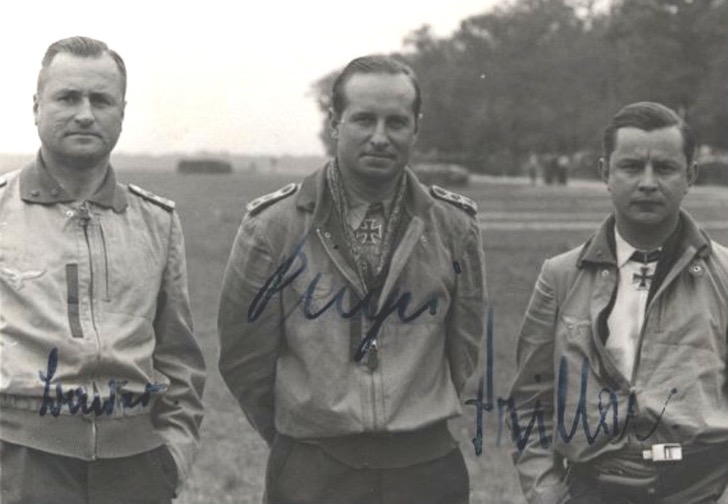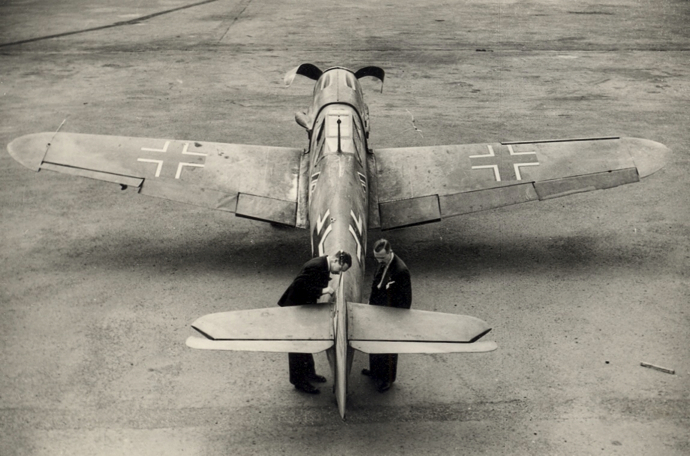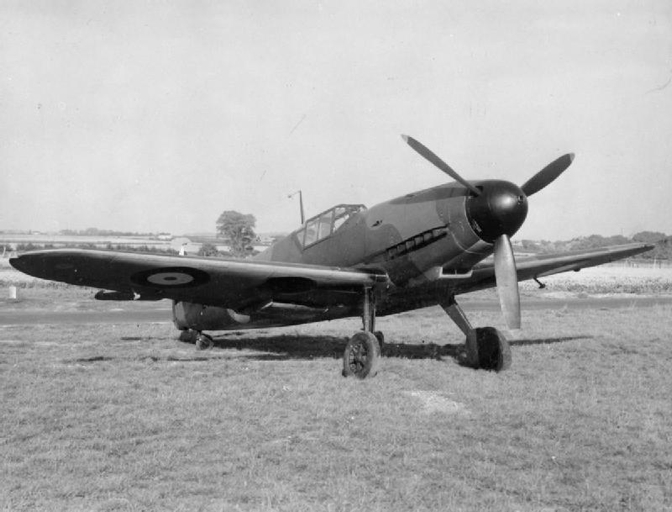Date: 10th July 1941
Time: 1.40 p.m
Unit: Stab I./Jagdgeschwader 26
Type: Messerschmitt Bf 109F-2
Werke/Nr.12764
Location: St. Margarets Bay, near Dover, Kent.
Pilot: Hauptmann. Rolf Pingel (Kmdr). POW 26 victories and holder of the Knights Cross (14.09.40)

Herbert Bauer, Rolf Pingel and Josef Priller.(Jeckel)
REASON FOR LOSS:
This aircraft was shot down by Spitfires whilst attacking a number of Short Stirling bombers returning from a mission. The attack by the Spitfires rendered his engine damaged, with both oil and water tempertures rising at an alarming rate it was impossible for him to return across the Channel. The only alternative would be to try and reach the English coast. On reaching Dover he succeded in making a landing in a cornfield near to St. Margarets Bay. Rolf climbed out and was about to set fire to the aircraft, when a detachment of the local Home Guard arrived on the scene and took him prisoner.
RAF Intelligence report states the following;
This aircraft was on a mission to intercept returning British bombers. The pilot followed a four engined bomber over the English Coast but soon after his engine failed and he was forced to make a good belly landing. No bullet strikes could be traced. Markings: two arrow heads, one within the other, pointing forwards; these were black, edged in white. According to the main fuselage plate this aircraft was made by A.G.O. Flugzeug Werke, Oschersleben in 1941. A plate on the fin showed Arado Flugzeug Werke, dated 1941, works no. 889. Camouflage; dark olive green on the upper surface with pale blue underneath. Rudder in yellow, with twenty-two Victory stripes painted on the tail. Engine: DB.601 N-1, made by Henschel Motorenwerke No. 32227.
Armament: one 20 mm calibre MG 151 cannon firing through the airscrew boss, fed by belt ammunition. There was also two MG 17 mounted above the engine, using 7.9 mm bullets with either green or black painted tips, with a green circle. There was only room for the carrying of 489 rounds for each gun, unlike the Me 109 E which could carry 1,000 rounds for each gun. Equipment: A new type of Draeger oxygen apparatus was fitted. The aircraft was equipped for carrying an auxiliary external fuel tank but none was fitted. The cockpit cover had a sliding roof panel and the engine cowling had been changed so that it hinged down the centre line. This pilot was the Gruppenkommandeur of I/JG 26 and had claimed twenty two victories.

Messerschmitt Bf 109F-2 Wnr.12764 after capture.

His Messerschmitt Bf 109F was the first example to be captured intact. It was repaired and evaluated by the RAF with its new serial number ES906. The aircraft was eventually 100% destroyed on the 20th October 1941 killing its Polish pilot F/O J. Skalski.
Researched and compiled by Melvin Brownless with special thanks to Horst Jeckel. (May 2013)

